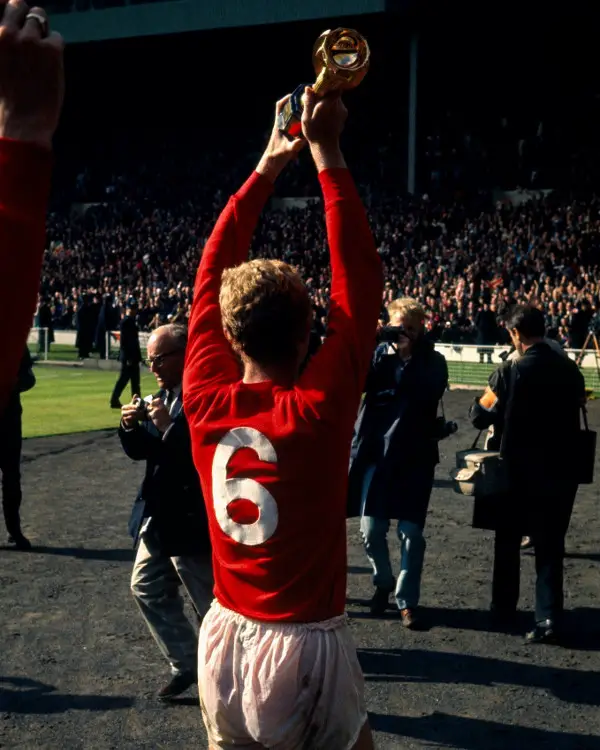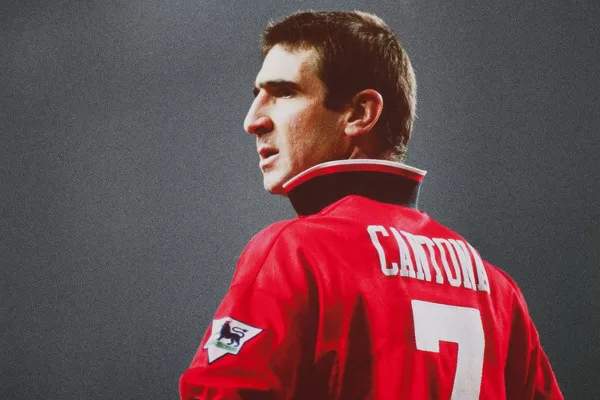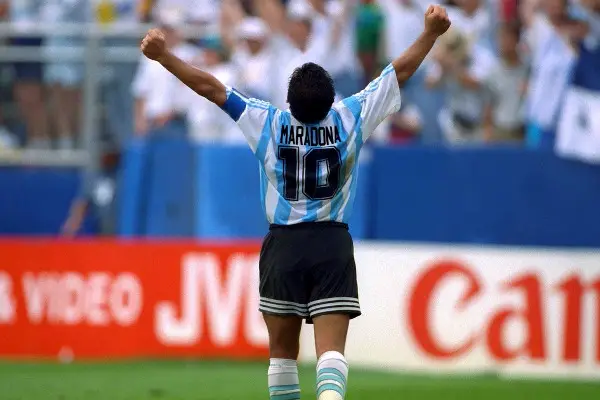Football shirt numbers help us to identify different players in a team, but they have deeper meanings.
They will give us an indication as to where the player takes their place on the field. Are they a defender, midfielder, attacker or are they playing in goal? Which side of the pitch do they play? Shirt numbers help us to work out the player’s starting position, as this guide will demonstrate.
What is the Highest Number on a Football Shirt?
The highest available shirt number is 99. In the major domestic leagues around the world, squad numbers are to be allocated from 1 to 99. In the history of the game, there have been higher numbers used, but this rule was introduced to avoid confusion and to limit shirts to number 99.
How do Football Shirt Numbers Work?
The following is a general guide to shirt numbers and how they work. Remember that football continues to evolve, so the old system of numbering players from 1 to 11 has become outdated to an extent.
Anything goes in a squad, but shirt numbers continue to follow a certain pattern, even in the modern game.
Shirt Numbers and Positions
The numbers on football shirts identify players, but they also tell us what position they play in. In the days when the team wore shirts numbered 1 to 11, the process was an easy one to understand. In the modern game, players are free to choose their own squad numbers, so there are some anomalies but, in general, they still follow a certain pattern.
Here is a guide to shirt numbers and their regular positions.
Number 1 on Football Shirt
The number 1 shirt is traditionally worn by the goalkeeper. When listing players on a team sheet, the goalkeeper always comes first, so it’s logical to put them in the number 1 jersey.
In modern football, it’s still likely that the goalkeeper will wear number one, but there are exceptions. For example, at Manchester United, first choice goalkeeper Andre Onana wears the number 24 shirt.
If we look back through history, some iconic keepers have worn number one. Gordon Banks, Pat Jennings, Lev Yashin and Peter Shilton are just four fine examples.
From Shirt Number 2 to Number 5
Shirts numbered from 2 to 5 are usually worn by the defenders. Numbers two and three are the right and left backs respectively, while 4 and 5 are usually the central defenders. On occasions, the number 4 will take up a midfield position, while the numbers 2 and 3 may be used as wing backs, but that’s how things generally work.
Once again, we are building out from the back so, following on from the goalkeeper who wears number one, the low numbered shirts are worn by the defenders.
Football players with the Number 6
The player with the number 6 on their back will often play in the centre of midfield. They can be a sweeper or a defensive midfielder who plays just ahead of the back four.
We mentioned in the previous section that a number four may sometimes come into midfield. In cases where this happens, the number six will usually drop into the centre of defence.
Perhaps the most famous number six in history was England’s World Cup winning captain Bobby Moore. He epitomised the type of player who would use this shirt – a combative defender who was perfect as the skipper of the side. Some time after Moore passed away, his West Ham United club officially retired the number six shirt, and that’s a rare thing in football.

Number 7 Shirt in Football
The player with the number 7 shirt in football will generally play on the right side of midfield. They may also be out on the right wing, delivering crosses into the opposition penalty area.
The most famous player to wear the number 7 shirt was George Best at Manchester United. He left a legacy at the club, and some talented players, including Eric Cantona and Cristiano Ronaldo, have subsequently worn number 7.
In the new age of football where some teams employ wing backs, the player with number seven on their back will move into a more central position.

Number 8 Shirt in Football
The number eight jersey is usually worn by an attacking midfield player. They can play in the middle of the pitch, although they may favour the right side of centre midfield.
The number eight is usually an attacking midfielder who is there to support the main strikers ahead of them. In the modern game of football, there may be exceptions to this point, but the number eight will mostly be a central attacking player.
Who wears the Number 9 Shirt?
In football, the number 9 shirt is worn by the centre forward. Even in the modern game, the main striker in any team is usually given the number 9 jersey. As with all of the numbers on this list, there are some exceptions, but that is the general rule that applies.
Some famous players to have worn the number 9 shirt include Ronaldo, Gerd Muller, Marco Van Basten and Alan Shearer. They were all prolific centre forwards who sum up what the number 9 jersey is all about.
What does the Number 10 Shirt Mean in Football?
The player with the number ten shirt would traditionally be a second striker. They would play alongside the number 9 in a two-player attack. In the modern game, where teams will sometimes play with just one attacker, the number 10 can drop back into midfield.
Alternatively, he or she will play just behind the main striker in the team. There have been some famous number tens in the history of the game, including the incomparable Brazilian international Pele.
Argentina’s Diego Maradona also wore number ten, and his insistence on using this shirt in 1986, forced the national team to abandon a specific numbering system that they had used in previous World Cups.

Number 11 Shirt
When football teams were set up wearing numbers 1 to 11, that number 11 jersey was worn by the player who was on the left side of midfield. They can also be used by the player who is on the left wing, and many world class players from this position have worn the number 11 shirt.
In the modern game, where some managers like to employ a wing back system, the player who operates up and down the left flank may also be allocated the number 11 jersey. Gareth Bale was a good example of this and he switched from number 3 to number 11 when he was employed in a more attacking position.
Footballers with Shirt Number 17
The number 17 shirt doesn’t come with a designated position, but the jersey is often worn by attacking midfield players. It is seen as a compromise for back up attacking players, or for those who don’t want to wear the number 9 or 10 shirts.
17 is the sum of 7 plus 10, and that’s why those attacking midfield players and wingers tend to favour it.
Players with shirt number 20
The number 20 shirt has no specific meaning, and it can be worn by any player in any position. In some competitions where a 20-man squad was required, this jersey would often be worn by the back up goalkeeper.
We now see that in other leagues too. At Tottenham Hotspur for example, the number 20 shirt was worn by back up keeper Fraser Forster in 2023. The number can, however, be used by anybody, and a former Spurs player, midfielder Dele Alli also wore the 20 shirt.
Football Players with shirt number 21
The number 21 doesn’t have a specific meaning in the game. However, as it is a high number, it tends to be worn by attacking players. It could be used by somebody who is deployed out on the left wing, as it is the sum of the number 11 shirt, plus ten.
While there have been some exceptions, the majority of players to have worn the number 11 shirt have been attackers. These include Bernardo Silva at Valencia and Manchester City, Antony at Manchester United and Paulo Dybala of Juventus and Roma.
Conclusion
Test your knowledge with our shirt number quiz!
Throughout football history, there have been some exceptions to these general rules. In the 1978 World Cup, host nation Argentina wore squad numbers which were allocated in alphabetical order.
This meant that outfield player Norberto Alonso wore number one, while the first choice goalkeeper, Ubaldo Fillol. Wore number five.
Shirt numbers were first used in English football in 1928, and clubs followed the 1-11 structure. This gradually began to change, and players can now choose their own numbers. In the English Premier League, clubs must submit their squads at the start of each season. The numbers for each player are declared, and they must retain those numbers for the remainder of the campaign.
This is why we now get a situation where the structure listed above is subject to change. Attacking players have worn low numbers, and some defenders have used high numbered jerseys.
Certain players are also known to be superstitious, and those beliefs are seen in the modern numbering system. An individual might choose a number that they consider to be lucky. Alternatively, they may copy a shirt from another great athlete, and that’s why many have worn the number 23, as used by the American NBA star Michael Jordan.
However, even in modern day football, the shirt numbers listed above can still offer a good, general guide to the positions that people are playing in.